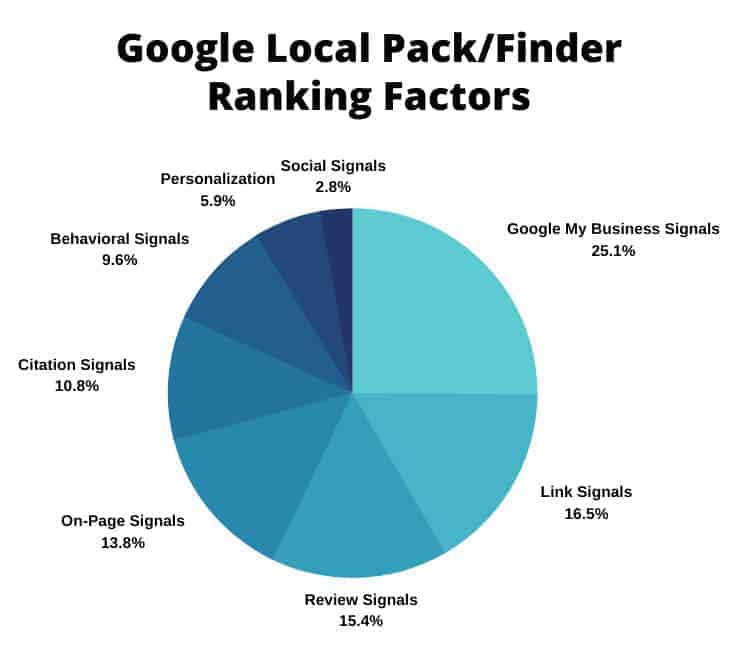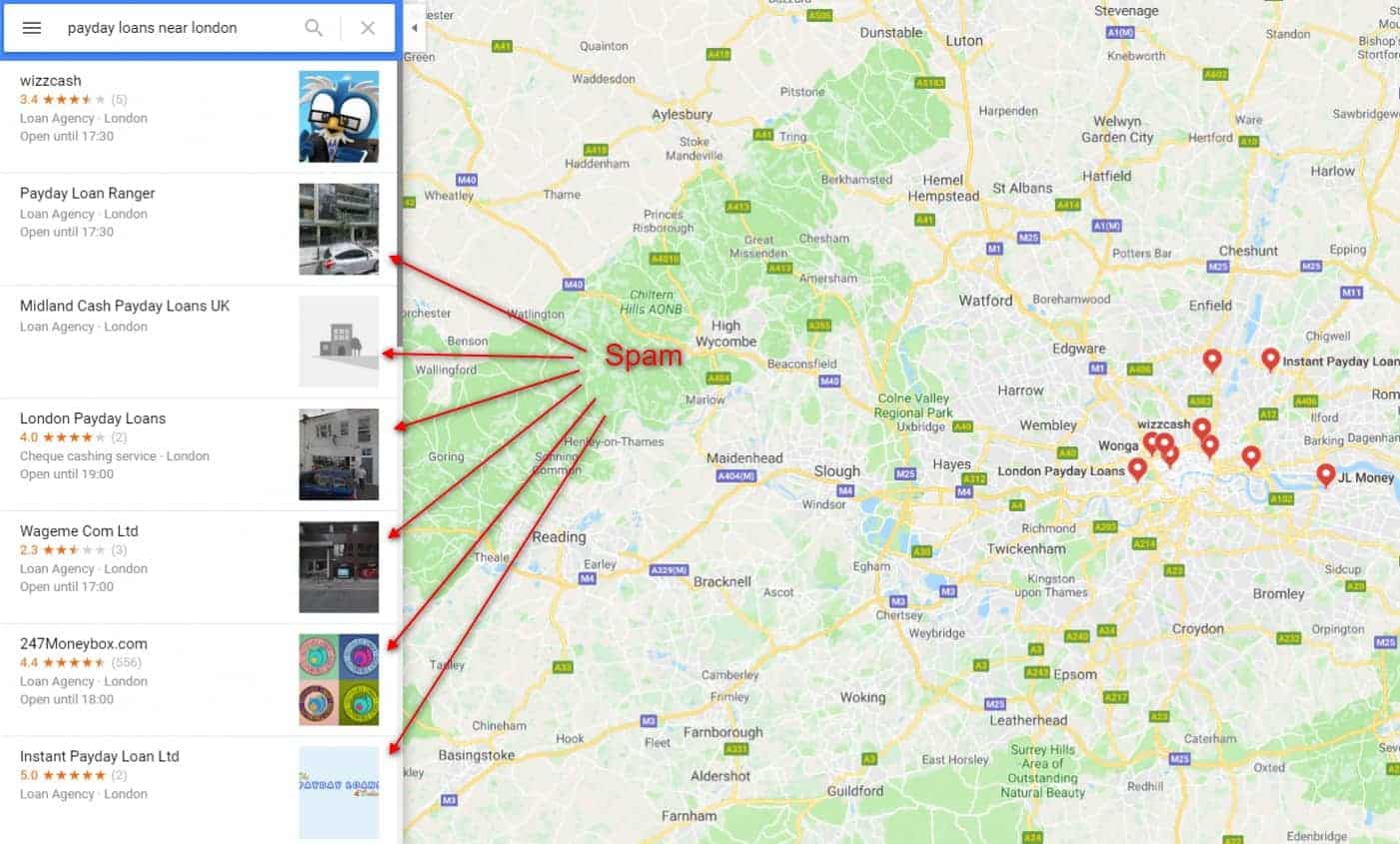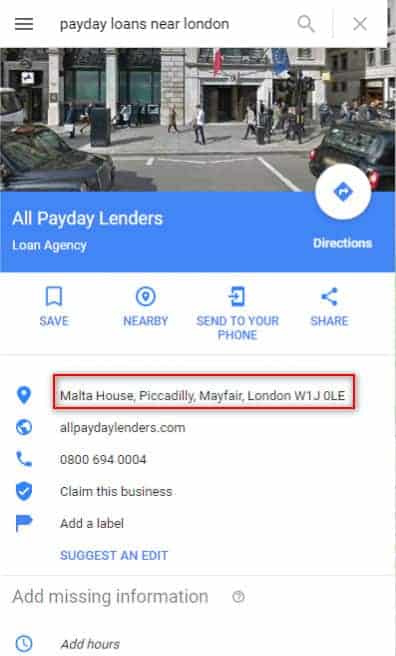For local businesses today, there are numerous different ways to market your brand online. The majority of your potential customers still use Google to find local businesses near them — businesses where they will spend their hard-earned money. In fact, 80% of searches with “local intent” result in a conversion.
This begs the question: “What’s the best way to catch the attention of local searchers on Google?”
The answer: through Google Maps marketing.
What is Google Maps marketing?
Google Maps marketing is the process of optimizing the online presence of your brand in Google Maps, with the goal of increasing your brand’s online visibility.
When you search a query on Google that has local intent, you often see something like this:

Google Maps marketing utilizes a number of strategies and tactics to help your business become one of those three positions on local map packs.
Why is marketing important for Google Maps?
The reason every local business should care about ranking in Google Maps is simple: potential brand visibility.
It’s no surprise that Google is by far the most popular search engine. But what about Google Maps specifically?
One study found that nearly 70% of smartphone users say they use Google Maps most frequently. On top of that, out of the 3.5 billion searches that happen on Google each day, more and more are considered to have local intent.
Thus, any business that is serious about getting found in this day and age needs to utilize the power behind Google Maps marketing.
Before you can rank in Google Maps, make sure you have first set up and optimized your Google My Business profile.
What is Google My Business?
Google My Business (GMB) is a free platform provided by Google where local businesses can create a profile that is displayed across a variety of Google products.
In order to qualify for a GMB profile you must make in-person contact with your customers during your stated business hours. This may mean that you have a brick-and-mortar location where customers come to see you, or perhaps you travel to see your customers.
A GMB profile can display a variety of information about your business such as:
- Business name
- Business description
- Reviews
- Phone number
- Address
- Website
- Business category or industry
- Locations that you serve
- Business hours
- Products and services
- Photos
And much more depending on your industry!
The purpose of creating a Google My Business profile for your brand is to increase your rankings, traffic, and revenue.
Top Google Maps ranking factors
It’s important to have a firm understanding of Google Maps ranking factors before you can expect to see high-ranking results. Once you understand how it works, Google Maps marketing becomes as easy as operating your 7-year-old’s Easy Bake Oven.
Okay, maybe not that easy, but everything will be much more clear. For a deep dive, I recommend checking out Moz’s 2018 local ranking factors study, but I’ll cover the top factors here.

In a nutshell, there are eight ranking factors that contribute to ranking in Google Maps and the local pack:
- Google My Business signals
- Link signals
- Review signals
- On-page signals
- Citation signals
- Behavioral signals
- Personalization
- Social signals
It’s important to keep in mind that the local algorithm works differently than Google’s organic search algorithm.
Google’s local algorithm analyzes all of the signals listed above and ranks listings based on the following three areas:
- Proximity: How close is the business to the searcher?
- Prominence: How popular or authoritative is the business in the area?
- Relevance: How closely does the listing match the searcher’s query?
Now that you have a handle on how the local algorithm works and its many ranking factors, let’s talk about specific ways to optimize your GMB profile to improve your ranking in Google Maps.
How to optimize for Google Maps
To kickoff your optimizations, double check that ALL of your business information is filled out in full and 100% accurate. This includes adding the many services that you might offer as well as descriptions of those services.
1. Get more online reviews
Reviews continue to be one of the most important components for ranking in Google Maps, but the benefit of building more reviews is not purely for the purpose of SEO (not by a long shot).
Reviews offer a much better customer experience. They help to build up social proof, manage customer expectations, and they can sell your product or service before you even get in touch with your customer.
With 82% of consumers reading online reviews for local businesses, every business owner needs to understand the importance and power of reviews.
Google understands the customer’s desire to read reviews before they visit a store or trust a brand. They have heavily factored reviews into the local algorithm because of this (reviews from both Google and third parties).
Keep in mind that the “review factor” is not simply a measurement of who has the most reviews. That is certainly a piece of the puzzle, but Google also takes into consideration many other aspects like:
- Whether a review has text along with the star rating or not.
- The words chosen to write the review.
- The overall star rating given to the business.
- The consistency of reviews.
- Overall review sentiment.
Business owners must regularly train themselves (and their team) to ask their customers for reviews. It’s important to set up systems and processes to make review generation a regular occurrence.
Pro Tip: Don’t ask for a review too early. Too many businesses ask for a review for a product or service before their customer has had the opportunity to fully experience it (and actually benefit from it). Only after they have had the chance to solve their problem with your product or service should you ask for a review.
2. Build local links
Links are still one of the largest ranking factors in Google’s algorithm (both in organic ranking and in Google Maps). In fact, building local links is especially important if you want to rank in Google Maps.
It’s true that any link that isn’t marked as nofollow will pass “authority”, which will likely help with rankings. However, local links are especially important because they have a much higher probability of driving actual business.
One of the best ways to start building local links is to utilize your local relationships around town. Think about other businesses that you work closely with, organizations that you support, or even companies that might qualify as a “shoulder niche”.
For the highest success rate, start with businesses that you already have a relationship with or know well. You could offer to write or record a testimonial in exchange for a link, or perhaps you could co-create a piece of content that benefits both of your audiences.
Here’s exactly how to do it:
- Create a list of niches that offer services that compliment (but don’t compete) with your business.
- Consider how you might be able to incorporate these other companies into your content outreach.
For example, a carpet cleaning business may decide to create a really helpful piece of content about cost-effective ways to increase a home’s value in a specific market. They might include advice about landscaping, painting, and of course, carpet cleaning. Before writing the content, they could reach out to a few local painting, landscaping, or home service businesses in the area and ask if those businesses would be willing to collaborate on the content and perhaps add a link to their resource pages.
This process can also work even if you don’t have an existing relationship with the business currently. Here’s a basic outreach template you can use:
Hello [NAME],
My name is [YOUR NAME] from [BUSINESS]. We are actually business neighbors in a way, as we are located not too far from you in [CITY]. I often pass by [THEIR BUSINESS] on my way to [LOCAL LANDMARK/DESTINATION].
I thought it was finally time to reach out and say hello, and let you know that if there’s ever anything you or your team need, please let us know.
Also, I am working on writing an article about [INSERT BLOG TOPIC HERE]. Since our businesses both serve a similar audience and compliment each other nicely, I was wondering if you’d like to be featured in the article?
I am going to include a section about [TOPIC ABOUT THEIR INDUSTRY], and would like to use a sentence or two with your advice coming from the [THEIR INDUSTRY]. It might even make a great addition to the resource page on your website. Please let me know if this is something you’d be interested in.
Either way, thanks for your time, and great to meet you!
[YOUR NAME]
Pro Tip: If you are working to build links on a budget, it may help to get approval for the link before you invest the time and resources in content collaborations.
3. Fight off GMB spam in the map
This final optimization is less of an “optimization” and more of a tactic. This tactic is powerful because unlike most GMB optimizations, the goal is not to do something better than your competition, it’s to remove the competitors that are trying to cheat their way to higher rankings.
Just how powerful is this approach? Very.
Let’s take a look at this Google Maps SERP as an example:

All of these spam listings are online only and use virtual offices, mail box services and or mail forwarding addresses. One even uses the Maltese Embassies address in London.

Now imagine you are a real company and you are trying to rank higher in Google Maps. If you successfully remove the top four spam listings, you have now jumped to the #1 position without making any additional optimizations.
Starting to see the logic behind this approach?
How to remove or edit Google My Business spam
Create a detailed record of each GMB listing you find and what edits are necessary. This will help later on if the changes keep getting reverted back.
Next, head over to Google Maps, find the listing, and click on “Suggest an Edit”.
Depending on the issue at hand you can either select:
- “Change name or other details”
- “Remove this place”
If you’re trying to remove keyword stuffing from a listing’s business name, you simply select “change name or other details” and make the necessary edits.
If you’re dealing with spam of some sort, you will need to select “Remove this place” and then select the exact issue from the drop-down list.
When suggesting an edit doesn’t get the job done
Unfortunately, submitting an edit about spam doesn’t always cut it. When this happens the best way to handle these spam listings is to use Google’s Business Redressal Complaint Form.
When using the redressal form, you’ll need to provide evidence before the required action takes place.


